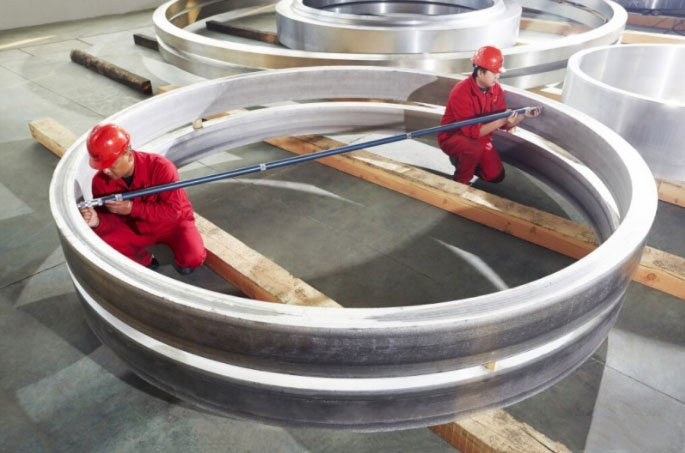Ring forgings are widely used in industry at present. The forging process of ring forgings is also composed of four parts. The following is mainly to tell you about some ring forging process, I hope you can learn.
The forging process of ring forgings mainly consists of the following steps:
Pier thick, pull out long, punch hole, reaming.
The difference between free forging and ring rolling is mainly in the process of reaming. In the production of ring forgings, the use of free forging is usually horsebar reaming, the use of ring rolling is mainly used to reaming.
Ring rolling is used for ring forging to produce continuous local plastic deformation by ring rolling machine (also known as ring rolling machine, ring rolling mill, hole reaming machine), so as to realize the plastic processing technology of wall thickness reduction, diameter enlargement and section contour forming. The stress strain and deformation flow in rolling reaming is the same as that in core reaming. Its characteristics are: the tool is rotating, deformation is continuous, namely the rolling of the ring billet. In the process of rolling and reaming, the pressure reduction is usually small, so it has the characteristics of surface deformation. Ring rolling is a continuous local plastic forming process, which is the cross and combination of rolling technology and mechanical manufacturing technology. Compared with the traditional free forging technology, die forging technology, etc., ring rolling has significant technical and economic characteristics.
The reaming of ring forgings in free forging is mainly by horse - bar reaming. The stress and strain of the horse-bar reaming is similar to the drawing-length, which is different from the drawing-length of the long-shaft. It is the drawing-length of the circular forging blank along the circumferential direction, and it is the partial loading and the overall stress. The metal in the deformation zone flows along the direction of tangential direction and width when the horse rod is reaming. The metal in the deformation area flows tangentially and increases the inner and outer diameters during the reaming. The wall of the forgings with holes reaming on the horse bar is generally thin, so the resistance of the metal tangential flow in the deformation zone at the outer end is in the direction of far and small width. The contact surface between the horse bar and the ring forgings is curved, which is conducive to the metal tangential flow. Therefore, the changes of forgings' size during the horsebar reaming are as follows: the wall thickness is reduced, the inner and outer diameters are enlarged, and the width (height) is slightly increased. Therefore, in the small batch, small ring, the selection of horse bar hole is more suitable for forging ring forgings.
from:168 forgings
Post time: Dec-01-2020

